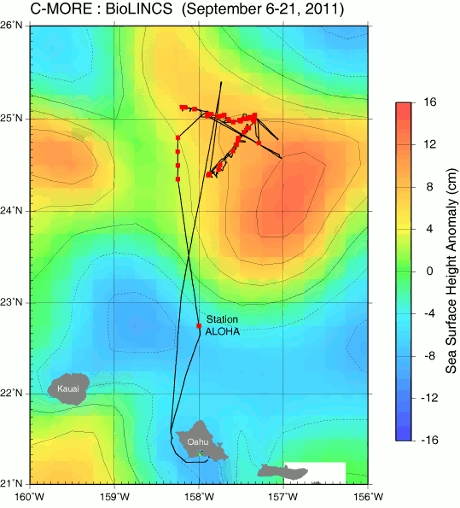|
During this cruise, the R/V Kilo Moana spent 14 days near a patch of open
ocean about 200 miles north of Oahu. Conditions in this area are similar to those at
Station ALOHA, a mid-ocean research site that for almost 25
years has provided researchers with a wealth of background information about the chemistry,
biology, and currents of the open Pacific.
Researchers on the R/V Kilo Moana conducted a number of experiments
to study marine bacteria and archaea. The researchers were particularly interested in how these
microbes take up nitrogen and convert it into different forms (nitrogen cycling).
These experiments involved deploying a variety of
research equipment in
the ocean and allowing this equipment to drift with the currents for days at a time. Some of these
drifting ("Lagrangian") instruments were incubators, which allowed researchers to run experiments
on microbes in the environment from which the microbes were collected (in situ).
| 




